This month I wish to continue the colour theme which Gail introduced last time with the colour blue/purple.
Blue/purple flowers are generally less common than other colours, but there are several plants, especially lilies, which flower in late spring.
Did you see the carpets of Blue Squill, Chamaescilla corymbosa var. corymbosa, last month, especially at O’Donohue’s Reserve? This special, small, blue lily with six bright yellow stamens only flowers on sunny days.
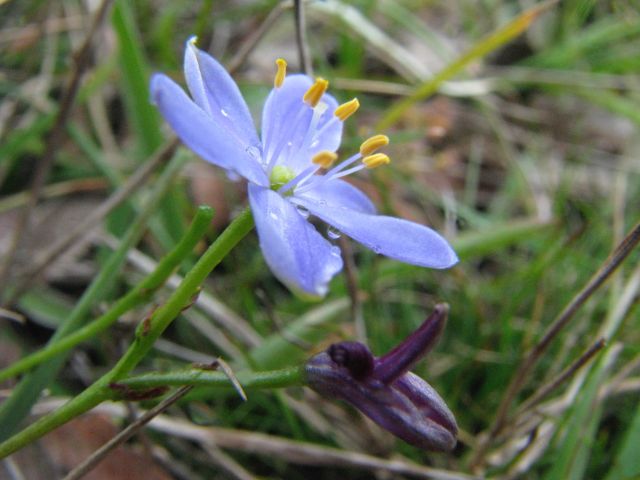
Blue Squill
In my research for these notes I read that the flowers twist after the pollen is released, but had never noticed this before. On my next ramble I looked closely at newly fertilised flowers and there were the twisted tepals (petals and sepals)!
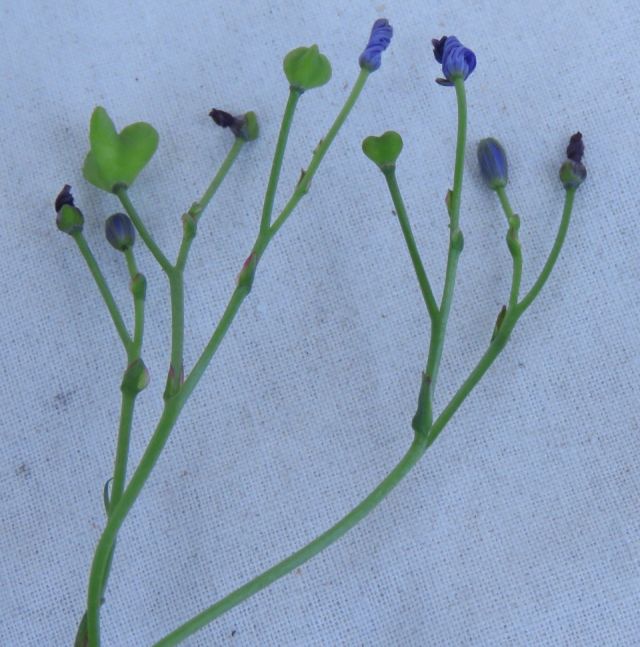
Blue Squill tepals
The flowers are mostly finished by November, but I always enjoy seeing the fruits which follow, as they are an unusual three-lobed light-green capsule which gradually darkens.
Purple Flags, Patersonia, are quite widespread, and a feature of places such as the Allen Noble Sanctuary. They have quite large three-petalled blue/violet flowers, and long, linear, grass-like leaves.

Short Purple-flag
Short Purple-flag, P. fragilis, have the flowers almost buried in the leaves, and Long Purple-flag, P. occidentalis , bear them on long stems, with a sheath-like bract under the petals. The flowers are short-lived, but each bract encloses three or four buds.
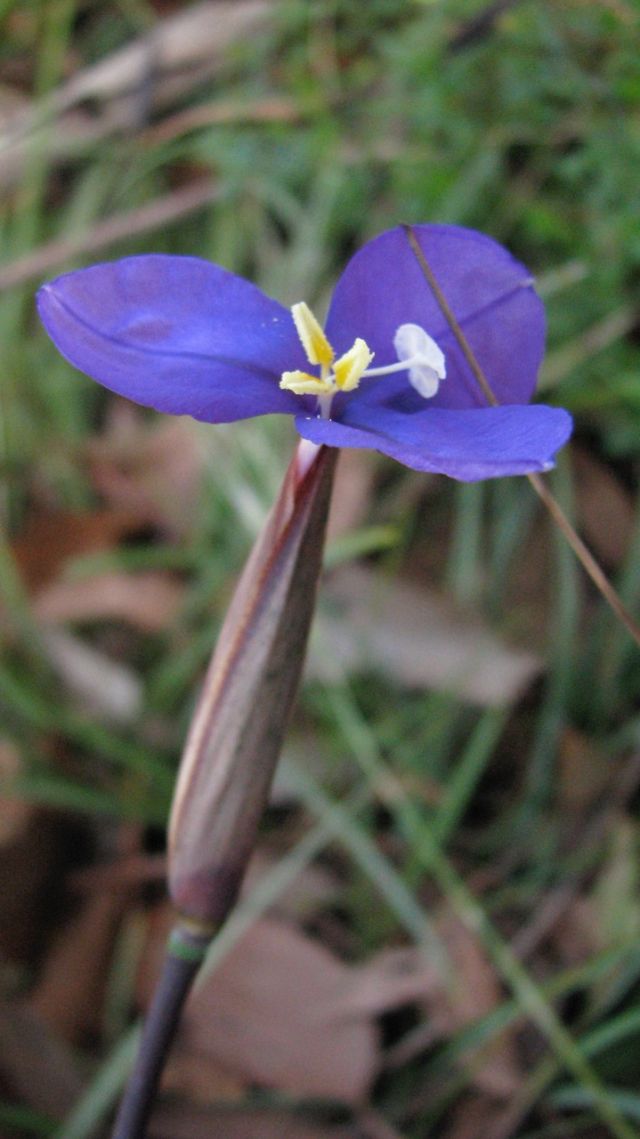
Long Purple-flag
The fluffy-edged flowers of the Fringe Lilies, Thysanotus, are a real delight. We have three species in our district and each has flowers which last only a day, and also only open when it is sunny.

Fringe Lily
The earliest, and my favourite, is Twining Fringe Lily, T. patersonii, which has the smallest flowers, and its leafless stems appealingly twist around other vegetation.
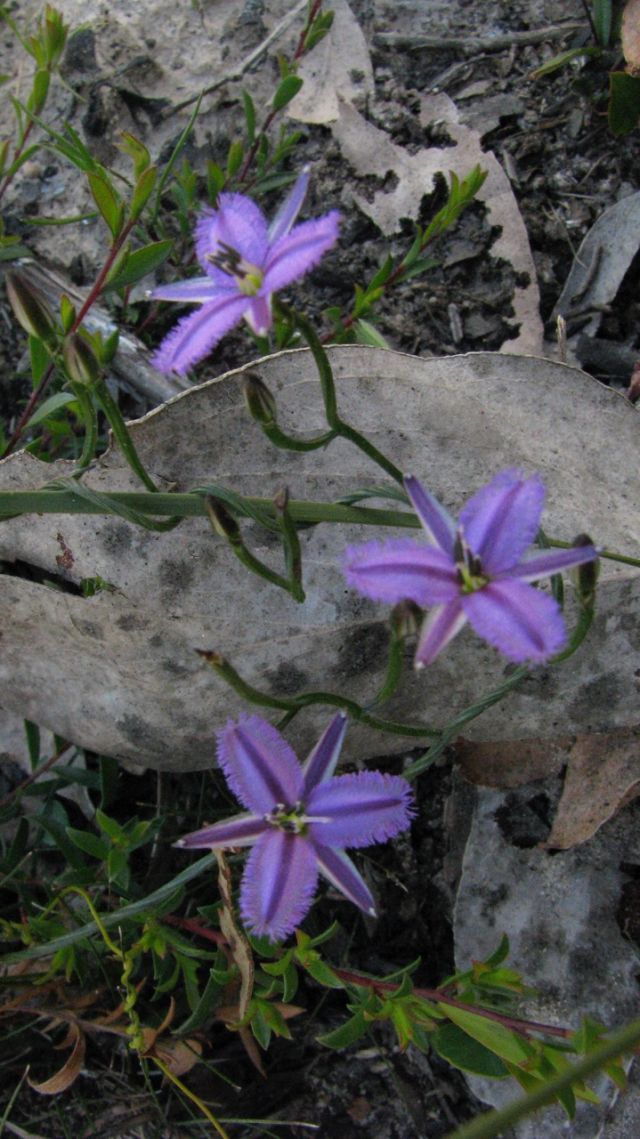
Twining Fringe Lily
There should be masses of Chocolate Lily, Arthropodium strictum, this year in places such as O’Donohue’s Reserve and the Aireys Inlet roadsides. The three petals, which alternate with the sepals, have a wavy margin superficially similar to the Fringe Lily.
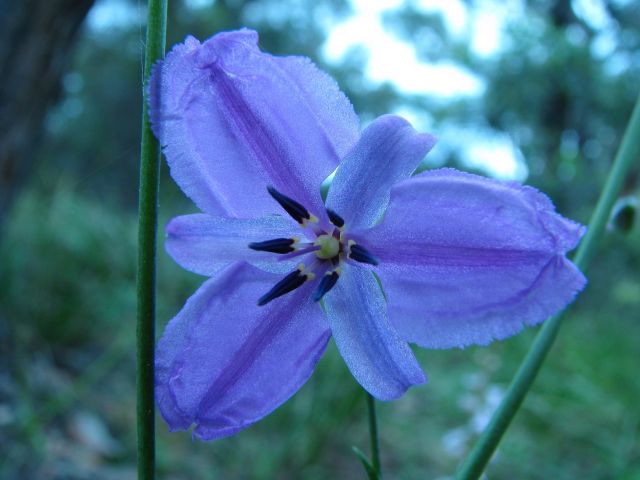
Chocolate Lily
Most people will be familiar with one or more of the four species of Flax-lilies, Dianellas, with their dainty blue dangling flowers with central black anthers, each with a bright yellow swelling at the base.
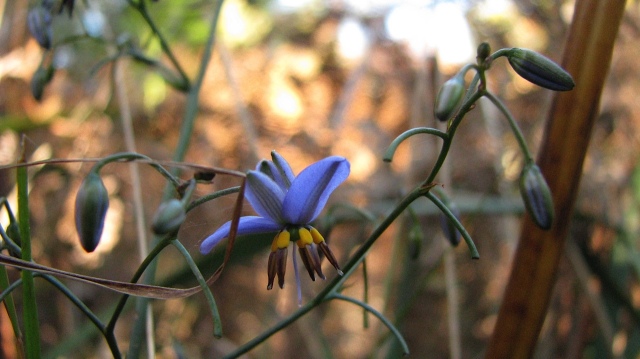
Flax-lily
When not flowering, this plant can be distinguished from the Mat-rushes, Lomandras, which have similar long strap-like leaves, by their prominent midrib. This month they may start bearing shiny bright blue fruit.
There are seven species, in a range of habitats, of Bluebell, Wahlenbergia, to look out for from now, and through the summer. The small, pretty, five-petalled flowers are borne on fine but sturdy stems which sway daintily in the wind, and have mostly inconspicuous leaves.

Bluebell
Love Creeper, Comesperma volubile, has been a feature of so many areas this spring as it twines its way over bushes and trees. The tiny blue pea flowers can form extensive canopies, which are inconspicuous when not flowering, being mostly leafless.

Love Creeper
On coastal cliff and heathlands look out for ‘mats’ of the prostrate Small-fruit Fan-flower, Scaevola albida. I always question why it is called blue, as I think it mostly looks white to pale pink, although the name Fan-flower is very apt.
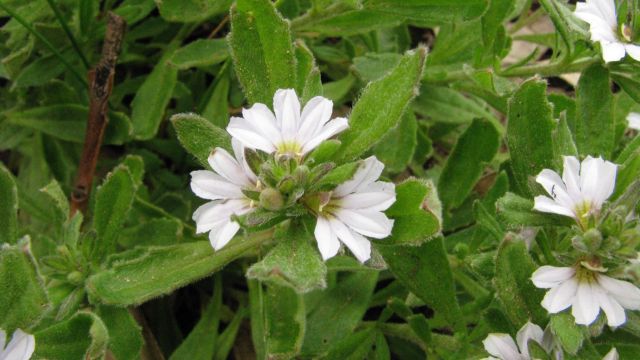
Small-fruit Fan-flower
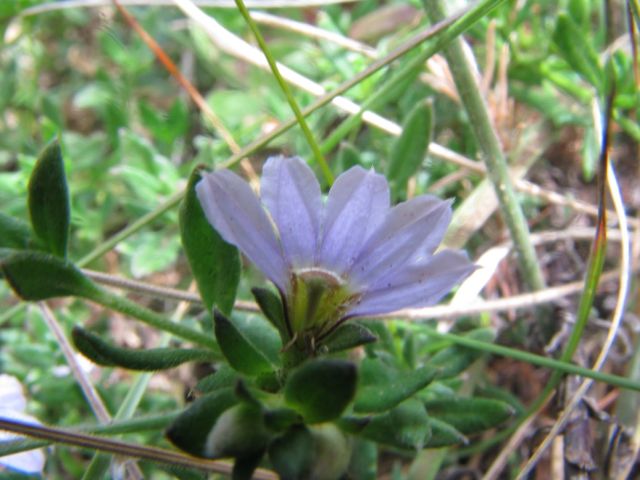
Small-fruit Fan-flower
However it is the Blue Pincushion, Brunonia australis, which signifies November to me, and this year should provide a great display after all the rain. Who could not admire the intensely blue dome-shaped flowers, with numerous yellow styles forming the ‘pins’ in the ‘pincushions’? Truly one of the best-named plants! This perennial herb has basal rosettes of long, narrow, hairy spoon-shaped leaves.

Blue Pincushion
Before I finish I must make a brief digression from blue. I was almost overpowered recently at O’Donohue’s by a glorious scent. And there they were, two low-growing Sweet Hound’s Tongue, Cynoglossum suaveolens, plants, with their tiny, inconspicuous white flowers – see page 56, Flowers of Anglesea and Aireys Inlet.
Ellinor Campbell